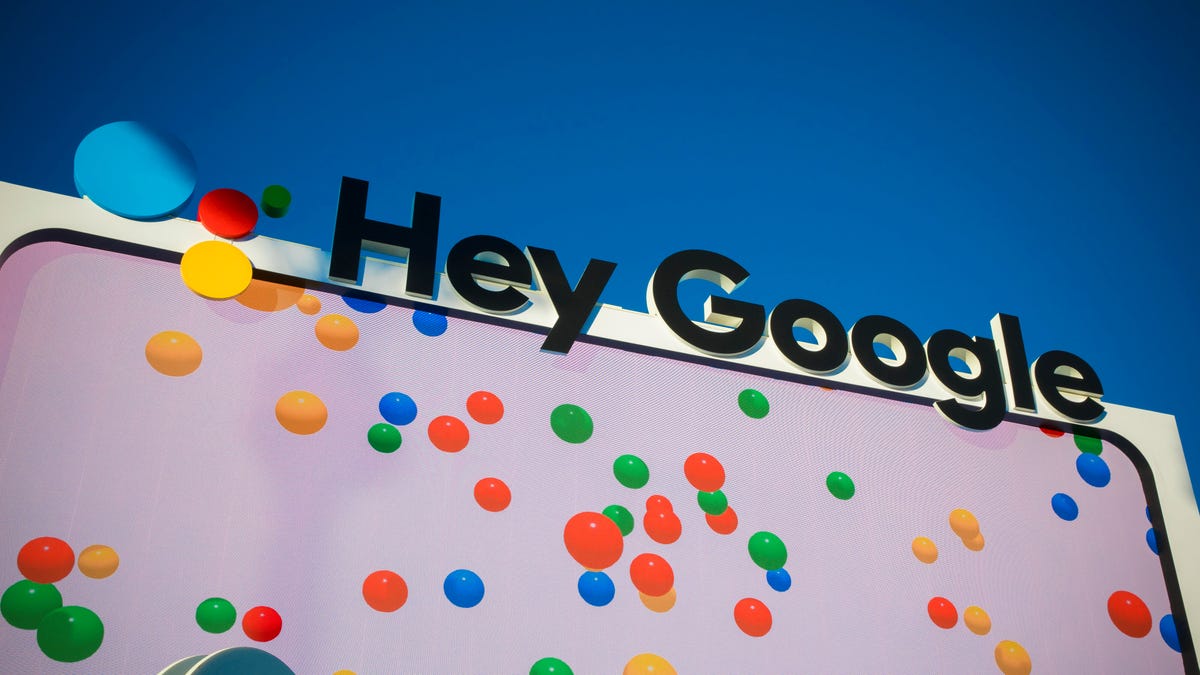6 new Google Assistant features, and how to use them: Scheduling, sticky notes and more
Google's digital voice assistant adds six new actions, which the company introduced at CES 2020 that you'll be able to use on your Google Home or phone.

Google's booth at CES 2020 was all about Assistant.
At CES last week, Google used its tremendous booth (complete with slides and a kooky tour) to announce new Google Assistant actions that you'll be able to use on your phone and Google Home or Nest Home device. Google's ambition is clear -- to become the one platform to rule your home, using Google Assistant to tie your hardware to Google's immense database of search and services.
Google's new features and an emphasis on privacy are part of a calculated move in the heated battle against Amazon to own the smart home market. Google Assistant has 500 million monthly users and is on over a billion devices. Amazon's Alexa assistant is installed on "hundreds of millions" of devices, Amazon said this week, more than doubling its presence in a year.
Assistant's new tools include scheduling actions, digital sticky notes and a privacy tool to make your Google Home or other Google Assistant-enabled smart device disregard what you said. Here are the six new features Google announced that will arrive later this year, and how you'll use them.
1. Link Google devices with Assistant in the app
Google is trying to make it easier for you to link your account to a smart home device that isn't made by Google, for example the C smart light bulbs or Ecobee smart thermostat. That's a boon for setting up new devices, which can take more leg work to get discovered and linked in Home.
Now, when you set up a new device with the manufacturer's app, Google will push a notification to your phone that you can select to automatically add your information.
2. Schedule actions for later
If you have any devices in your home that are compatible with Google Assistant -- say a microwave, TV or smart plug -- you can use a new feature called Scheduled Actions to control it.
You'll be able to say things like:
- Hey, Google, start the coffee-maker at 6 a.m.
- Hey, Google, turn off the TV at 9 p.m.
- Hey, Google, turn on the robot vacuum cleaner at 3 p.m.
The feature will come out in 2020 to more than 20 devices.
The Nest Hub Max and other smart displays will work with Google's digital sticky notes.
3. Leave Household Notes, like digital Post-Its
Called Household Notes, this next feature reenvisions Post-It Notes for a smart display . The idea is for anyone nearby to see the note, even if they're not voice-matched to the display.
You'll simply say, "OK, Google, leave a note. I already fed the cat" to create the sticky note. The new tool will roll out over the next few months.
4. Create a speed dial of Household Contacts
Another shared feature for the entire household is a speed dial called Household Contacts. You'll need a smart display to use it.
The family member with the master account (the one who sets up the device) can make a master list of phone numbers -- say, the babysitter, Grandma or your favorite restaurant for take-out. That way, anyone can place a call without having to look up the phone number first.
The list of contacts can be added during device setup, or from the Google Assistant app on your phone. To use it, you'll say, "Hey, Google, call Grandma" or by tapping the contact name from the contact list.
See also
- CNET's 20 favorite products of CES 2020
- All the cool new gadgets at CES 2020
- Full coverage of CES 2020
Little by little, Google is making smart speakers smarter.
5. Have Google Assistant read long stories aloud
Google Assistant can already read to you, for example, audiobooks and emails. Now, Google's expanding that to read longer articles aloud.
You'll simply say, "Hey, Google, read this page," for Assistant to begin. The page also scrolls with you so you don't lose your place. You can translate it into 42 languages. It'll be available in the next couple of months.
6. Use these two new privacy controls
There are two new privacy-related tools to use with Google Assistant. If you think you accidentally triggered Google Assistant, you can say "Hey, Google, that wasn't for you" to make it disregard anything you said.
Google likes to use Google Assistant to communicate what it's doing in terms of privacy. You'll also be able to ask, "Hey, Google, are you saving my audio data?" Google Assistant will tell you about privacy controls and open the settings screen on your phone app to review your preferences.
Originally published last week.

